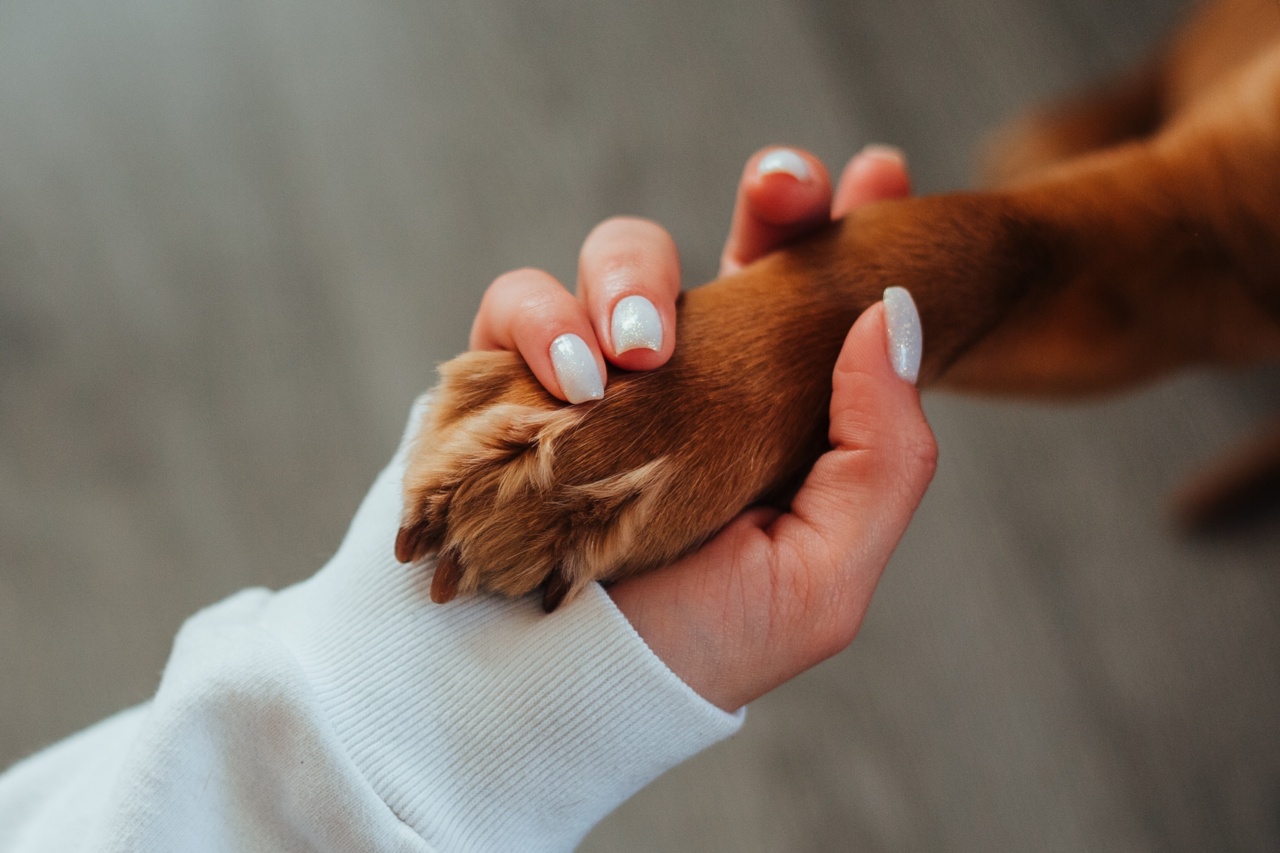Building trust and a strong bond with your furry friend is crucial for a happy and harmonious relationship.
As pet owners, understanding how dogs communicate and express their emotions through body language can greatly enhance our ability to connect with them. Trust plays a vital role in this process, and dogs have their unique ways of signaling trust. In this article, we will explore various trust signals displayed by dogs and how to interpret them.
1. Wagging tail
A wagging tail is often associated with happiness and friendliness. However, the intensity and the position of the tail can convey different emotions.
When a dog holds its tail high and wags it loosely, it is generally a sign of relaxation, friendliness, and trust. On the other hand, a low wagging tail or a tucked tail may indicate fear or anxiety. It’s important to pay attention to the overall body language of the dog to correctly interpret the meaning behind the wagging tail.
2. Relaxed body
An open and relaxed body posture is another trust signal displayed by dogs. When a dog feels safe and comfortable in its environment, it will have a loose and wiggly body.
Relaxed muscles, a slightly open mouth, and ears in a neutral position are indications that the dog is calm and trusting. Conversely, a stiff and tense body posture suggests unease or apprehension.
3. Eye contact
Eye contact can have multiple meanings depending on the context. In the realm of trust signals, sustained eye contact with a soft expression indicates a dog’s comfort and willingness to engage.
It shows that the dog is not perceiving you as a threat and is receptive to your presence. However, direct and intense eye contact with a fixed stare can be perceived as a challenge or a threat by some dogs, so it’s important to be aware of individual differences and respect their boundaries.
4. Play bow
A play bow is an unmistakable trust signal often seen during playtime or interactions with humans. It’s a clear invitation to engage in mutual play and indicates that the dog feels comfortable and playful in your presence.
The play bow posture involves a lowered front end with raised hindquarters, and the dog may wag its tail enthusiastically. Responding to the play bow by reciprocating playfulness helps to strengthen the bond and build trust between you and your dog.
5. Lick
Licking is a behavior commonly associated with dogs showing affection, but it can also be a trust signal. When a dog licks you gently and without excessive slobber, it demonstrates trust and a desire to bond.
Licking can release endorphins in dogs, making them feel more relaxed and content. However, it’s important to note that excessive licking or persistent licking in specific situations may indicate anxiety or stress. Always observe the context and other body language signals to interpret the meaning behind the lick.
6. Yawning
Yawning is not always an indication of tiredness or boredom for dogs. In the context of trust and relaxation, a dog may yawn as a way to communicate that it feels safe and comfortable in its surroundings.
It can be a calming signal by the dog, implying that it is not on high alert and is at ease. Dogs also tend to yawn when they observe humans or other dogs yawning, indicating social bonding and empathy.
7. Paw lift
A paw lift is a subtle and endearing trust signal displayed by dogs. When a dog lifts its paw and offers it to you or another individual, it is an invitation for interaction and a sign of trust.
This behavior is commonly seen during greetings or in situations where the dog seeks attention or interaction. Responding positively to the paw lift by petting or engaging with the dog further strengthens the bond between you.
8. Leaning
Dogs may lean against their humans as a way to display trust and seek comfort. This behavior is particularly common among dogs who have a strong bond with their owners and feel secure in their presence.
When your dog leans on you, it’s a sign that they trust you to support them emotionally and physically. Embrace this gesture, as it strengthens the bond and reassures your dog that you are there for them.
9. Soliciting attention
To build trust, dogs often seek attention and physical contact from their owners. If your dog nudges your hand with its nose, paws at you gently, or leans into you, they are soliciting your attention and affection.
Responding positively to these cues by petting or engaging with them reinforces the trust they have in you. By giving them attention and responding to their needs, you deepen the bond and create a secure environment for your dog.
10. Calm demeanor in unfamiliar situations
When dogs find themselves in new or potentially intimidating situations, their body language can reveal a lot about their level of trust.
Dogs who maintain a calm and relaxed demeanor when confronted with unfamiliar experiences or environments demonstrate a strong trust in their owners. They perceive their owners as reliable and capable of keeping them safe. It’s crucial to support your dog in these situations, provide reassurance, and gradually expose them to new experiences to build confidence and trust.
Understanding your dog’s body language and the trust signals they display is key to fostering a strong and harmonious relationship.
Trust is built over time through consistent positive interactions, respect for your dog’s boundaries, and responsiveness to their needs. By observing and interpreting these trust signals, you can deepen your connection with your furry friend and create a safe and loving environment for them.





























